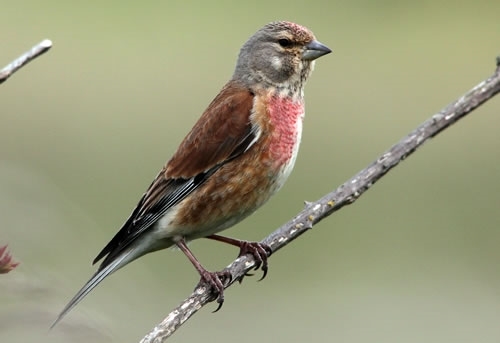(Carduelis cannabina)

Habitat
Linnets use a varied habitat including areas of scrub, wasteland, heath and urban areas. On farmland, linnets can be found wherever there is a plentiful supply of seeds.
Food
Linnets and their chicks rely almost entirely on seeds throughout the year. During the winter, adults will favour stubbles and field margins where weed seed and split grains are abundant. Dandelion seeds in pasture are particularly important. Chicks feed on weed seeds and unripe oilseed rape grains.
Nesting
Linnets typically nest in thorn hedges. They are usually 0–2 metres up in thick, well-maintained thorn hedges, bramble patches and areas of scrub. Gorse bushes are a favoured nesting site.
Song/Call
“Tett-ett-ett”- Their song is a mixture of short rattling syllables and their call is bouncing and nasal.
Beneficial Management
- As linnets are particularly reliant on seeds, wild bird-seed crops are extremely beneficial.
- Where possible, tolerate a few weeds such as dandelion in improved pastures and aim to maintain all areas of unimproved grassland.
- Allow a naturally regenerated green cover to develop on overwintered stubbles. Leave destruction of the green cover as late as possible in the summer.
- Retain areas of rough grass and bramble around the farm. Avoid being ‘over tidy’, as this will reduce feeding and nesting opportunities.
- Establish extended field margins in arable and grassland fields and manage these with a rotational cut so as to allow grasses and broadleaves to set seed and carry them through the winter.
Download and print
Download as PDF to print >
Get the Latest News & Advice
Join over 100,000 subscribers and stay updated on our latest advice, research, news and offers.
*You may change your mind any time. For more information, see our Privacy Policy.